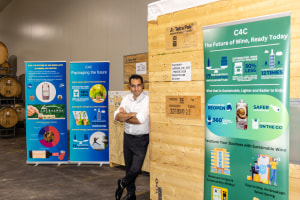PE bags have hidden potential for powder-type products writes Alan Arbotante of Haver & Boecker Australia.
Twelve years ago, packaging with PE (polyethylene) bags was only possible for coarse particle products.
In 2005, the introduction of new technology gave manufacturers of powder-type products the opportunity to take advantage of this superior packaging material.
Waterproof, UV resistant and clean, the advantages of packaging powder-type food stuffs in Polyethylene plastic using Form, Fill and Seal (FFS) technology are providing companies around the world with the opportunity to gain a competitive edge.
Consequently, more food manufacturers of products such as proteins, dextrose, flakes, icing sugar, cacao powder, starch and other powdered foods are packing their goods into this versatile packaging material.
PE power
Depending on the requirements, the value-adding advantages of PE packaging include durability, more security during extended storage, and greater cleanliness throughout the logistical chain.
The high level of water-tightness and PE’s resistance to frost make it possible to store products outdoors year-round in all weather conditions. This allows filling plants to produce at constant capacity over the entire year and to secure sales turnover during peak periods.
Manufacturers and end-customers gain more stock space and are better able to utilise storage space. The overall protection and high UV-resistance of PE means quality remains steadily high over long periods so end-customers are able to take on larger quantities without having to sacrifice quality.
Less transport and storage damage also result. Depending on the climate, storage and transportation conditions, up to 10 per cent of products packed in conventional bags might not reach the end-consumer in a proper condition because of bag breakage and humidity.
At the point of sale, bag cleanliness and uniform product quality add to increased customer satisfaction and thus lead to stronger sales. Attractive and customised packaging designs can enhance the manufacturer’s brand.
In this respect PE offers a number of possibilities. Plastic bags can be printed over the entire surface and in multiple colours with photo-quality images, product information and barcodes.
And that’s not all that PE bags have to offer.
With options of using smooth or rough bags, or those with easy-to-tear PE material, water solubility, carry handles, re-sealable openings or the possibility to mix directly in the bag, there is a PE solution for almost any manufacturer.
And when it comes to sustainability, PE bags can be made from renewable, compostable and biodegradable raw material and recyclable PE.
Advanced technology
Advanced PE packing technology offers a high performance system with a universal spectrum of applications and product-specific dosing and compaction systems.
Machines are compact in size and require very little film because of the efficient compaction function, saving significant costs on the packaging itself.
The impetus for developing PE packing technology for powder-type products started when a customer of Haver & Boecker, a developer and supplier of innovative processing and packing technologies, expressed the wish to pack powder product into plastic bags.
Finding a solution was no easy task, but using the given requirements the technical experts at Haver & Boecker developed a completely new bag and filling concept in a compact design. Vibrating bottles and vibrating table or bottom vibrators provided the needed compaction.
In 2005 the first ever Haver & Boecker Adams packing machine went into production and quickly established itself on the market.
Today, over 100 machines are in operation in 18 countries worldwide, and Adams packing systems are available with the common performance spectrum of up to 2000 bags/hr and for a weight range of 1-10kg, 5-30kg and 15-50kg.
The packing of powder products into PE bags is seeing growing acceptance by the market.
End-buyers are opting for products filled in PE packaging or even directly requesting it because of their attractive store shelf appearance and other clear advantages like cleanliness and protection from the weather elements.
It is becoming the new standard for packing powder-type products.






